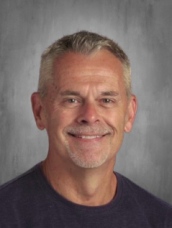Teaching is an art. And with any art, you must cultivate and nurture your skills. Skills are only meaningful if one has strong feelings, beliefs and ideas about education. I believe in four tenants of teaching and learning: (1) all children must feel safe and happy in able to learn in an environment with boundaries; (2) children learn in a variety of modalities, and accommodations must be made for learners with special needs; (3) students desire and deserve feedback in a variety of ways; and (4) creativity, problem-solving, and critical thinking must be an integral part of the curriculum. I practice each of these tenants in my teaching and thus, these beliefs turned into practice form my philosophy of teaching. I keep these four tenants to the forefront in all I do for students and do not stray from my teaching philosophy. Keeping this focus allows me to witness a multitude of rewards, both small and large. The reward can be miniscule, as when a child with a behavior disorder is able to remain calm in a tense situation with a peer due to my intervention. Or the reward can be huge as when one of my students has a piece of art selected for a prestigious art exhibit. Rewards come each day in many ways. The rewards in teaching are much greater than the salary I receive or the awards bestowed upon me. Rewards come for me in the successes of my students and the relationships with my colleagues. I strive to know my colleagues on both a personal and professional level and work to build learning communities with others that will provide for student success.
In putting my philosophy into practice, I look to keep the four tenants I follow in all aspects of my teaching. First, I strive to create a structured and comfortable learning environment for students to learn, and I receive satisfaction knowing I did my best in setting clear guidelines and boundaries. Students know that I expect them to: (1) be safe, (2) be respectful, and (3) be responsible. I believe in broad guidelines that allow all students to succeed on different levels. Secondly, in the lessons I teach, I explore many ways to present the information necessary for learning and skill building from visual to auditory, kinesthetic to cognitive inquiry. Learners and learning styles vary, thus teaching styles must vary also. The use of accommodations for students with special needs is an integral part of how I reach all learners, no matter their ability. I am joyful when a child with Downs Syndrome masters a skill beyond what anyone expected. If you expect more, students usually step up to the challenge. Finally, assessment is key in understanding what students know and learn. Whether formative or summative, students want to know when they are successful. From verbal feedback to written rubrics to summative report cards, I believe these are necessary in understanding student growth and development. When I am in a building for a number of years and can teach concepts and skills to an entire school population, I am thrilled when I see light bulbs going on, and I am rewarded a hundred-fold. And finally, as an educator of children who presents curriculum through visual art and technology, I see the need for development of the 21st Century Skills a vital and necessary part of what I do daily. As Daniel Pink states in his book, A Whole New Mind: Why Right-Brainers Will Rule the Future, we must be preparing our students to think independently with open-ended solutions and be willing to take risks to solve problems that may have many good solutions. Without this focus on creativity, other nations will surpasses us as the innovators and developers of new ideas. It is imperative that we find space in all our curriculum areas to promote and develop the thinking that will continue to make America the leaders in innovation and creativity.
My philosophy of teaching and beliefs about education directly connect with my personal teaching style. With the tenants of safe learning environment for children, providing accommodations and feedback, and use of critical thinking in teaching and learning, I have a strong philosophical theory that when put into practice, provides good teaching and learning. One of my favorite quotes sums up my thoughts about teaching. From John Steinbeck, “I have come to believe that a great teacher is a great artist and that there are as few as there are any other great artists. Teaching might even be the greatest of the arts since the medium is the human mind and spirit.”
I'm in my 33rd year of teaching for Lincoln Public Schools and have taught at: Pyrtle, Beattie, West Lincoln, Pershing, Sheridan, Eastridge, Elliott, and now Robinson. I was fortunate to be named Nebraska Art Teachers Association (NATA) Educator of the Year in 2005, Eastridge Gold Star in 2007, and elected as National Art Education Association (NAEA) Elementary Division Director and Western Region Vice President. I'm in my second term as the NATA President. In addition, I was selected as an Award of Excellence recipient and finalist for Nebraska Teacher of the Year in the fall of 2007 by the Nebraska Department of Education. In 2009 and 2010, I was nominated for the LPS Scottish Rite Distinguished Teacher Award and received the award in 2010. I was also nominated for the Christa McAuliffe Award through UNL in 2010. I have a beautiful daughter named Genevieve Alexis. She was adopted from Guatemala in 2005.
Professional Experience
Masters in Education Administration, UNL, 1997.
Bachelors in Education, Visual Art and Speech Communiations, Wayne State College, 1990.
I have taught at Pyrtle (1990-1997), Beattie (1997-2003), West Lincoln and Pershing (2003-2004), Sheridan and Eastridge (2004-2005), Eastridge (2005-2017, Elliott (2017-2022), and Robinson (2022-present).
